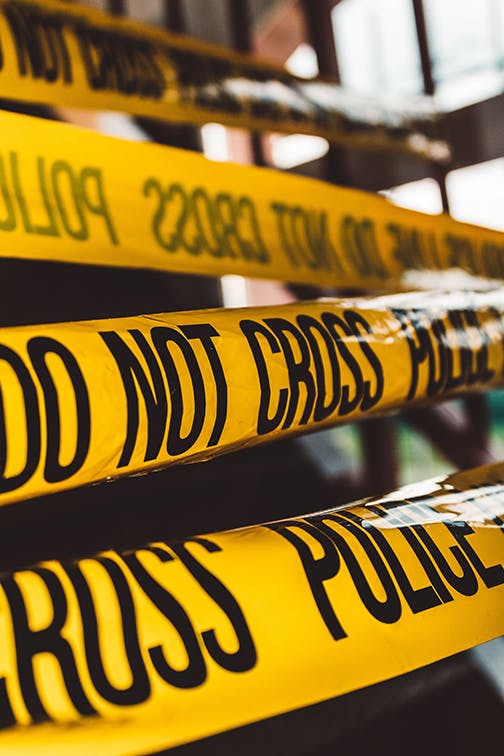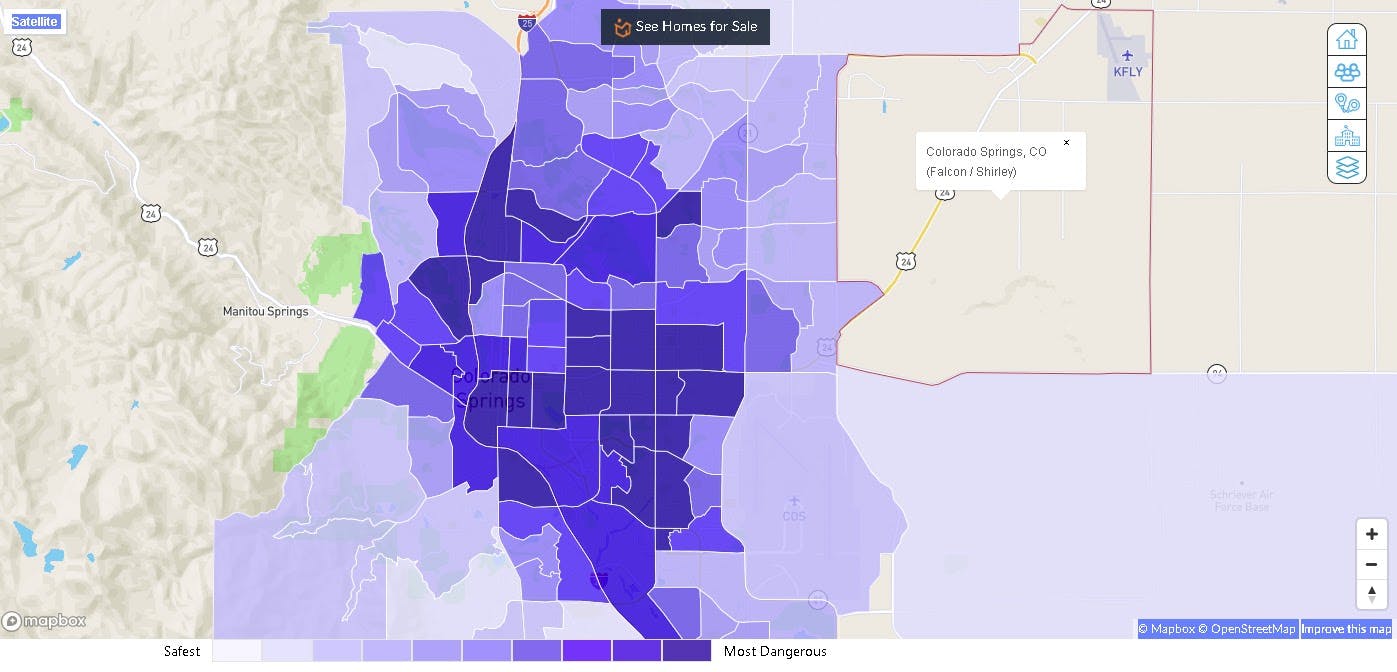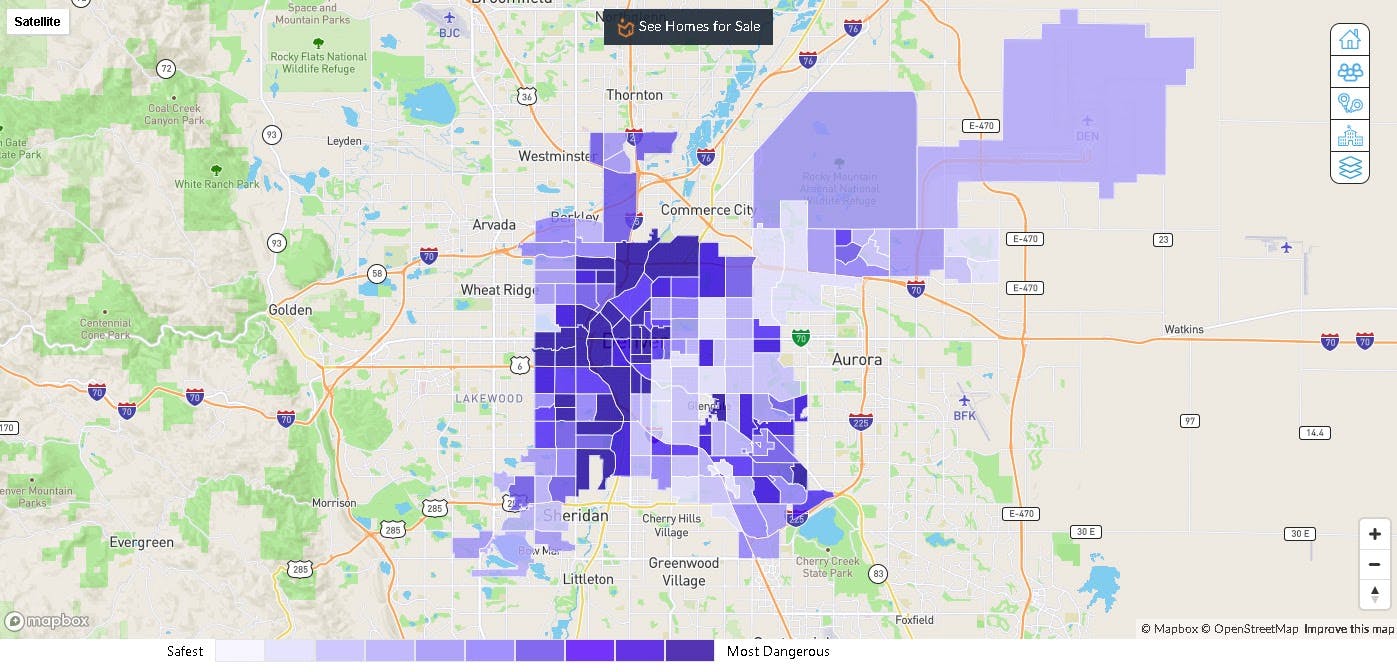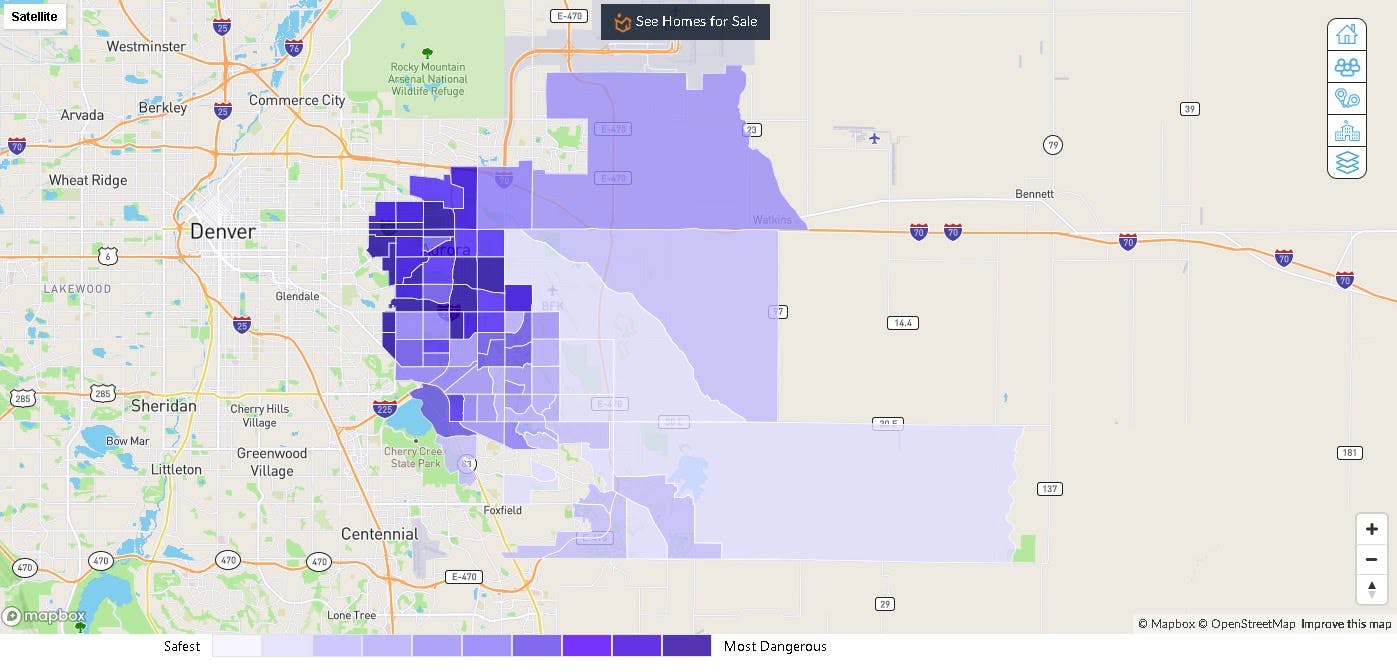
Crime comes in many forms. Violent crimes, both inside and outside of the home, are a threat to anyone. Property crimes include burglary of a home, theft of belongings on open property, and stolen items from vehicles. Sexual assaults, forced rape, homicide, and even human trafficking can happen almost anywhere, and sadly, this includes cities near Colorado’s captial. The police departments and police officers in Colorado remain very busy, especially within the dense cities such as Colorado Springs, Denver, and Aurora. In very clear memory to most Coloradans is the Aurora shooting that occured in 2012 that led to the deaths of twelve people; threats and copycat attempts followed soon after in the same theater and those nearby in Boulder County.
When deciding where to build or purchase a home, one aspect of the process is researching the local crime statistics for the area. Ironically, expensive townhomes and apartments of the inner cities remain more expensive despite the higher crime rate, while property on the outskirts of the following Colorado cities feature a much lower crime rate and more affordable homes.
Here is a wide summary of Colorado crime rates as well as available crime maps provided by NeighborhoodScout.com. While the following information may cause you to avoid the denser Colorado cities, there exist many areas in Aurora, Colorado Springs, and Denver that make them attractive places to live.

Colorado Crime
According to statistics gathered by the FBI for 2016, Denver, Colorado Springs, and Aurora were the three cities with the highest number of property crimes, larceny, and sexual assaults. Uniform crime reporting also identified high rates of burglary, robbery, and motor vehicle theft. According to the crime maps we present in this article, however, all of these crimes are not evenly distributed across each city; there exist both high crime and low crime zones in specific areas.
The Colorado Springs Police Department publishes a yearly document detailing crime statistics and crime definitions. Divided into “Group A” and “Group B” offences depending on the severity of the crime, here are a few definitions they detail for “Group A” according to state law:
- Physical assault, broken further down in aggravated assault (usually involving a weapon), simple assault (typically a fight in which no one ends up with lasting injuries), and intimidation.
- Drug and narcotic violations, which includes possession, distribution, or growing of substances like marijuana without a license, or the possession of devices and machinery used for the development of drugs and narcotics.
- Fraud, including impersonation (such as with identity theft), and welfare or credit card fraud.
- Homicide and manslaughter, which also includes justified homicide (for example, defending your home or family from a criminal with a weapon).
- Prostitution and sexual offenses, which include forcible rape and sodomy. The legacy definition of rape included only women, but the revised definition in 2016 involves any victim of any age or gender.
- Not counted towards property crime, arson is counted when applicable as its own category.

Examples of “Group B” offences include:
- Loitering or violations of curfew for young adults
- Driving under the influence, or DUIs
- Liquor law violations, such as vending alcohol without a license
- Trespassing on private or federally-protected land
The two different groups of criminal offences carry their own fines and jail time. The Colorado Springs Police Department annual report classifies victim types, which break down into five different groups: businesses, financial institutions, government buildings and employees (which includes public schools), religious groups (which include religious buildings and clergy, church-run schools), and public violations (which includes all domestic crimes).
The legalization of marijuana in Colorado has left many legislators wondering if the increased crime rate can be associated with tourists and residents growing and selling THC and pot. While medical marijuana has given many people relief from pain and epilepsy, the use of recreational marijuana has spurred national debates. Restrictions on advertisements to minors and licenses to shops that sell marijuana has assisted cities like Denver and Boulder in regulating sales. Edibles with THC must be clearly labeled, especially packages for candy and baked goods. Since recreational marijuana was legalized in January 2014, data is continually being collected, testing the connection between heightened crime rates and hospitalizations for minors and adults. To this day, the consensus remains divided about legal marijuana and its effect on cases of domestic violence and property crime.
Next, we will break down the crime rate according to each location and show the safest and most dangerous areas of each city.
Colorado Springs Crime Map

Colorado Springs Crime Rate
According to data collected by NeighborhoodScout.com and FBI data, depending on where in Colorado Springs you live, the crime rate is rather high. In fact, 87% of all cities in the United States have a lower crime rate than Colorado Springs. Counting violent crime and property crime, the average depends on the overall population size, as well as the average of all locations under the jurisdiction of the police departments in Colorado Springs.
Colorado Springs is one of the most violent cities in the United States. Violent crimes included in the data are rape, manslaughter, armed robbery, and aggravated assault. Total crimes have been falling on average year after year, but the chances of violent crime remain very high in most areas.
As for property crimes and damage, the average shown by the statistics are 1 in 30 per thousand residents in Colorado Springs. This represents the highest type of crime in Colorado Springs. FBI crime statistics in 2016 showed 16,500 incidents of property crime, including but not limited to burglary and larceny of both residential, commercial, and public property, and car theft.
As you can see on the map below, except for areas near law enforcement departments, the inner city of Colorado Springs remains a hotbed for both domestic and property crimes. The further away from the city itself, such as at the Air Force Academy and Castle Rock to the north and Peyton to the east. Generally, the outskirts and highways of Colorado remain country and farmland. Property and livestock crime can occur, but the further away from the populated centers, the lower the amount of property crimes.
We advise anyone choosing to move to Colorado Springs to remain vigilant in choosing a home or apartment. Doing further homework about crime rates in your chosen location can help you greatly in avoiding incidents of crime that may affect your health, well-being, and property. Home security hardware such as motion-activated lights, security cameras, and strong locks are advised. Never forget to lock your car, and avoid parking your vehicle in dark and secluded positions; garages and well-lit parking locations are a good idea.
Keep in mind that the map below does not include the area west or further areas of the lesser populated county.
Denver Colorado Crime Map

Denver Crime Rate
As the most populated city in Colorado, a high amount of crime, both domestic crime and property crime, can be expected. Unfortunately, according to the FBI and NeighborhoodScout.com, it is only safer than 6% of cities in the United States. In 2016, crime data shows the majority of crimes included larceny, property damage, and motor vehicle theft. Violent incidents numbered above 4,000 per year in the most dangerous areas, including a murder rate of about 50 to 60 incidents per year.
According to DenverGov.org, the average police response time to major crimes in 2018 was 11 minutes and 37 seconds. For non-critical calls, the average time was 28 minutes and 52 seconds. The average police response time in the United States as a whole is 9 minutes and 35 minutes for serious incidents. Depending on the time of year, especially around the holidays, response times can be longer.
As we mentioned for Colorado Springs, take advantage of home security to keep your property safe from burglary and theft. Protect your vehicle as best you can, and consider living in the suburbs outside the city center for added safety and security.

Fort Collins and Colorado State University
As a larger population area due to the university, Fort Collins is slightly safer than Denver and Colorado Springs. However, the crime rate remains fairly high; only 8% of cities in the United States are more dangerous than Fort Collins. According to FBI data collected from 2016, 165,000 instances were called into the local police departments.
At Colorado State University, the crime and disciplinary incident rate is much higher than roughly 4,000 national schools; about 1600 incidents were reported in 2018. The crime rate is significantly lower than the city itself due to a strong security force on campus. The majority of crimes reported involved drug, alcohol, or weapon possession leading to disciplinary actions or arrests. The third most numerous crimes involved violence against women.
FastWeb.com offers great steps to staying safe while attending college. These include never walking alone at night, being aware of your surroundings (meaning not being absorbed in cell phones and other tech devices), and protecting yourself with pepper spray or self-defense techniques. Check out our article as well on things you can do to improve your personal safety.
Aurora Colorado Shooting: The Incident and the Aftermath
On July 20th, 2012, a crowd of people entered the Century 16 multiplex theater for a midnight viewing of the movie The Dark Knight. Sitting in the front row of the packed theater was James Eagan Holmes. About twenty minutes into the movie, Holmes exited the theater through the self-locking door to the parking lot, propping the door open so he could return. Once at his car, he equipped himself with full-body protective gear, a 12-gauge tactical shotgun, an M&P semi-auto rifle, a .40 handgun, and a set of headphones blasting music that, according to his later testimony, would prevent him from hearing the reactions of his victims.
Reentering the theater, the shot several shotgun shots at the ceiling, and then into the crowd. His semi-action rifle malfunctioned. His pistol rounds pierced the wall of the theater, hitting several people in the adjacent theater room. There were additional reports that he threw several canisters of smoke or gas that distracted anyone from stopping his assault.
Once out of ammunition, Holmes exited the theater and stood at his car, “disconnected” from his actions. Six minutes after the first shots were fired, officers were on the scene, apprehending Holmes and aiding the wounded. In addition, when going to his apartment to further investigate his reasons behind the attack, they discovered the front door had been booby-trapped with an explosive device. The following day, bomb experts were able to disarm the device. Upon further investigation of the apartment, police discovered over 100 custom-made grenades and 30 gallons of gasoline.
82 people were casualties of the attack. 10 people died on the scene, and two died soon after at the nearby hospital. Four men died protecting their girlfriends from shots, and one father died protecting his two teenage daughters.
Holmes would go on to plead insanity during his trial, but the criminal justice appointed psychologist that examined him determined he knew exactly what he did. Prosecutors sought the death penalty, but his ultimate punishment was life in prison without parole. In fact, he earned 12 lifetime sentences, one for each of the victims that perished. The Cinemark-owned theater would be sued by the families of the victims for not having greater security at their theaters.
As the most deadly incident in the United States since the Columbine School shooting in 1999 (overtaken only by the Orlando nightclub shooting in 2016), it will not be soon forgotten in Colorado. Ever since, reducing the crime rate in Aurora, Denver, and Colorado Springs has become a priority for law enforcement agencies. But despite this, great care should be taken to keep you and your family safe while in these cities.
Only so much could be done to prevent a tragedy like this but there are tragedies that you can prepare for and potentially prevent. By purchasing, installing, and arming a Cove alarm system many intruders will be scared off by the audible alarm and you’ll be notified as soon as an intruder enters your home. Especially if the intruder is armed you’ll want the fastest response time possible from the police. Cove is one of, if not, the fastest, at contacting the authorities and having them respond. We want everyone to not just feel safe, but to actually be safe and secure. Helps us help you by ordering a Cove security system today.
